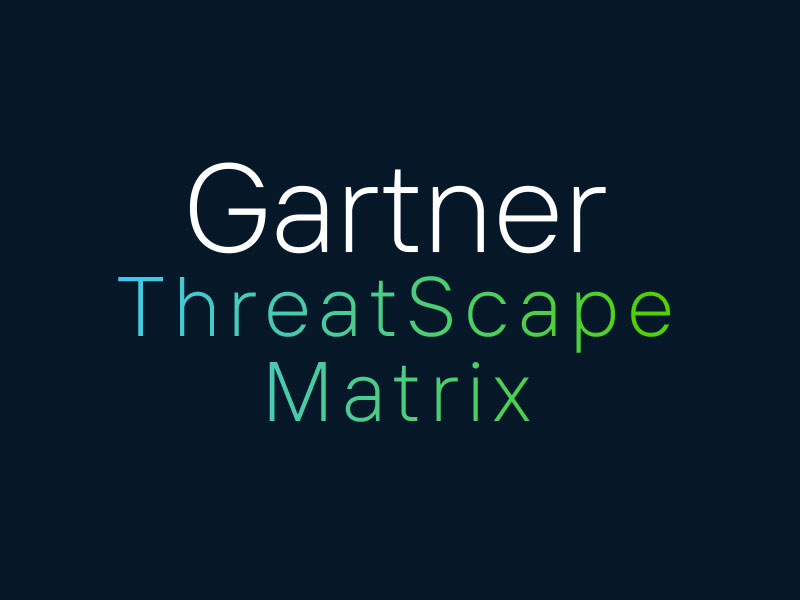Threat Landscape 2025–2026:

How to Survive (Strategically) in a VUCA World
If you think 2025 marks the peak of digital maturity, you’re only seeing half the picture. The other half is a realm of invisible, hyperfast, and hard-to-classify threats — the most dangerous kind.
Today’s enterprises operate within a VUCA environment — Volatile, Uncertain, Complex, Ambiguous. This isn’t just corporate jargon; it’s a structural reality. As digital transformation accelerates, threat models diversify, defy traditional classification, and blur strategic and operational priorities.
The real question for every CTO and Cybersecurity Manager is no longer “What threatens me?” but rather, “What advantage does my adversary have over me?”
Gartner’s ThreatScape Matrix 2025, a new danger map
Gartner’s 2025 ThreatScape Matrix categorizes threats based on signal strength (information availability) and attacker advantage, not technology or vector:
- Critical/Emerging (Attacker Advantage): Deepfakes, AI application compromise, prompt injection, state-sponsored attacks, automation hijacks.
- Complex/Volatile (No Advantage): Ransomware, supply chain, account takeover, CPS breaches.
- Established/Latent (Defender Advantage): Phishing, BEC, API abuse, postquantum cryptography.
Conclusion: Defenders are winning old battles but losing the new ones — and the battlefield shifts monthly.
The Rise of Deepfakes
I numeri non sono opinioni: il 37% delle organizzazioni ha già subito un deepfake audio, il 43% in video call.
Reality is no longer a guarantee. 37% of organizations have experienced audio deepfakes; 43% during video calls. Biometric authentication — voice or facial — is a new target.
These attacks exploit people, not just systems. That urgent fund transfer request from the CEO? It could be synthetic audio. The cultural impact is severe, undermining trust in internal decision-making.
Countermeasures? Liveness detection, ISO/IEC 30107-3, meta-risk signals (SIM swap, caller ID spoofing), and high-impact authorization governance.
AI Compromise: The Prompt Is the Weapon
In 2024, 70% of AI-related attacks targeted the model supply chain. LangChain, Langflow, GitHub Actions. This isn’t sci-fi malware, but the impact is similar: AI infrastructure becomes both vector and victim.
Key Recommendation from Gartner: Implement AI TRiSM frameworks to manage trust, risk, and security — and prepare for incidents driven by behavioral manipulation, not infrastructure breaches.
In 2024, 70% of AI-related attacks targeted the model supply chain — LangChain, Langflow, GitHub Actions. This isn’t sci-fi malware, but the impact is similar: AI infrastructure becomes both vector and victim.
Key Recommendation from Gartner: Implement AI TRiSM frameworks to manage trust, risk, and security — and prepare for incidents driven by behavioral manipulation, not infrastructure breaches.
CPS and Critical Infrastructure Under Fire
Cyber-physical systems (CPS) — managing energy, transport, industry — are increasingly exposed. You don’t need a hostile nation-state anymore; criminal actors with dark web toolkits suffice.
Main Issue:? IT/OT convergence remains unstructured. Boundaries are porous, policies asymmetric, and the risks can impact physical safety.
Urgent Actions: Managed remote access, manual recovery in incident response playbooks.
Supply Chain Risks: The Silent Entry Point
From SolarWinds to XZ Utils backdoors, supply chain attacks are now routine. The risk isn’t just who supplies the software, but how it’s built, what libraries it uses, and what cryptographic posture it maintains.
Gartner’s Advice: Introduce Cryptographic Bill of Materials (CBOM) alongside SBOM. There is a need for algorithmic robustness transparency.
From Metrics to Outcomes: Building Strategic Resilience
Adopt Continuous Threat Exposure Management (CTEM) to continuously assess and validate threat exposure. Simulate realistic emerging attack scenarios — LLM ransomware, agentic AI — to avoid surprises.Shift focus from alert volume to outcome-driven metrics: How much residual risk have we actually mitigated?
Security Culture as a Competitive Advantage
Awareness training is no longer enough — behavior change is the goal. “Security behavior” programs can significantly reduce phishing and BEC risk, especially when framed as empowerment, not compliance.
So…
In a VUCA world, adaptability beats scale. Tools like the ThreatScape Matrix, CTEM, and AI TRiSM are not acronyms for the sake of it — they’re frameworks to strategically govern uncertainty.
The real question for security leaders today:
“Are we prepared to defend against threats we haven’t even imagined yet?”
SEO Keywords: threat landscape 2025, IT/OT resilience, deepfake cybersecurity, AI security, VUCA cybersecurity